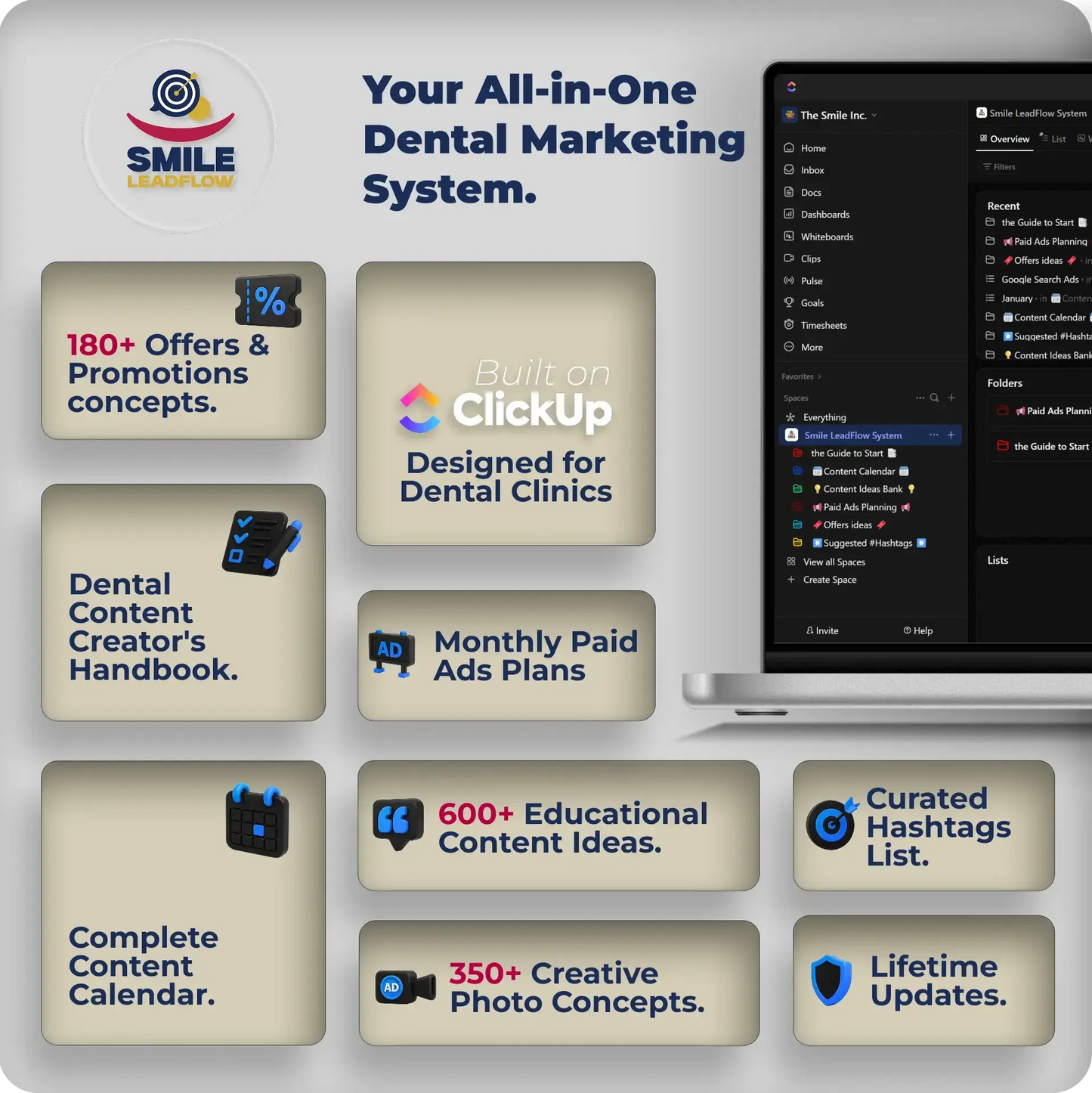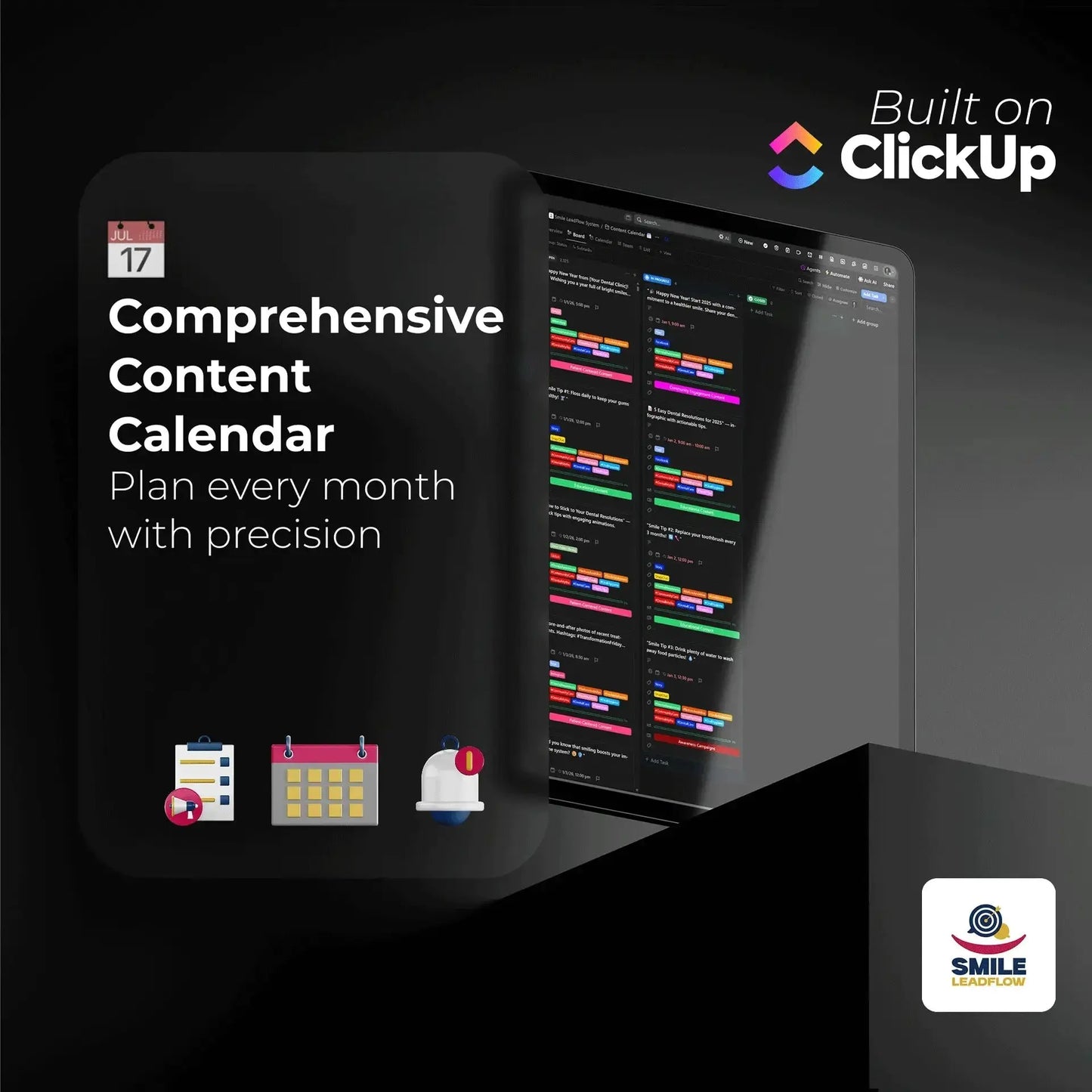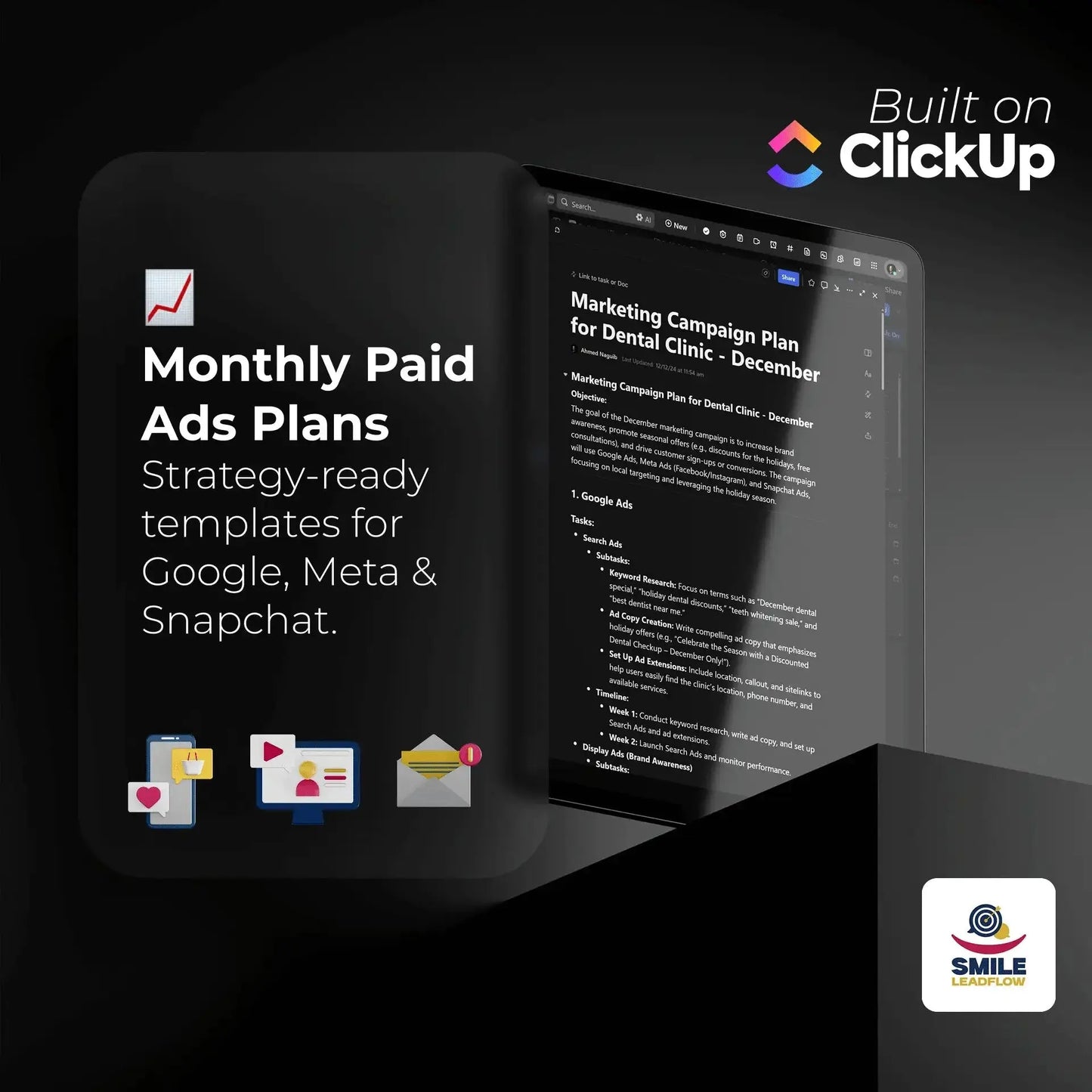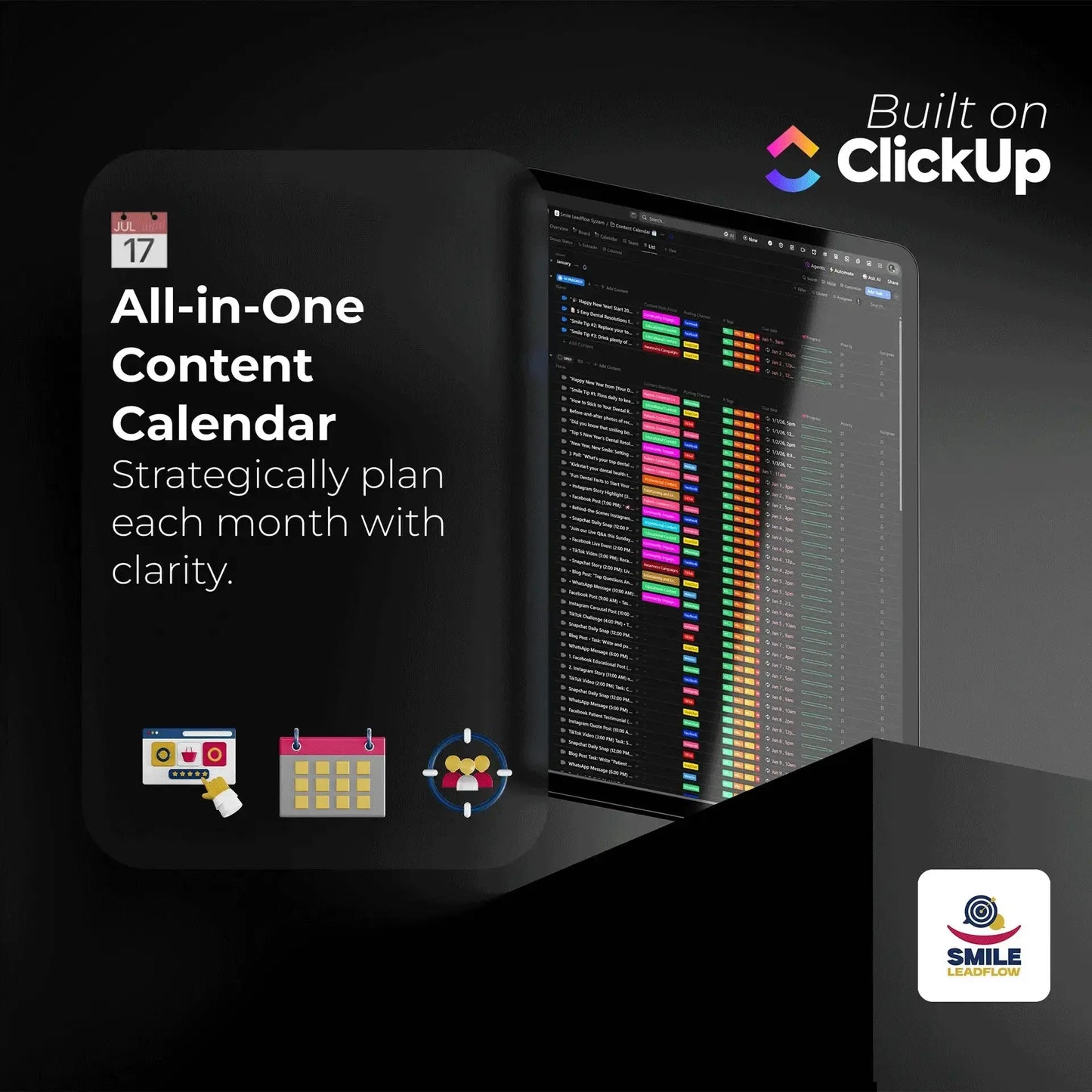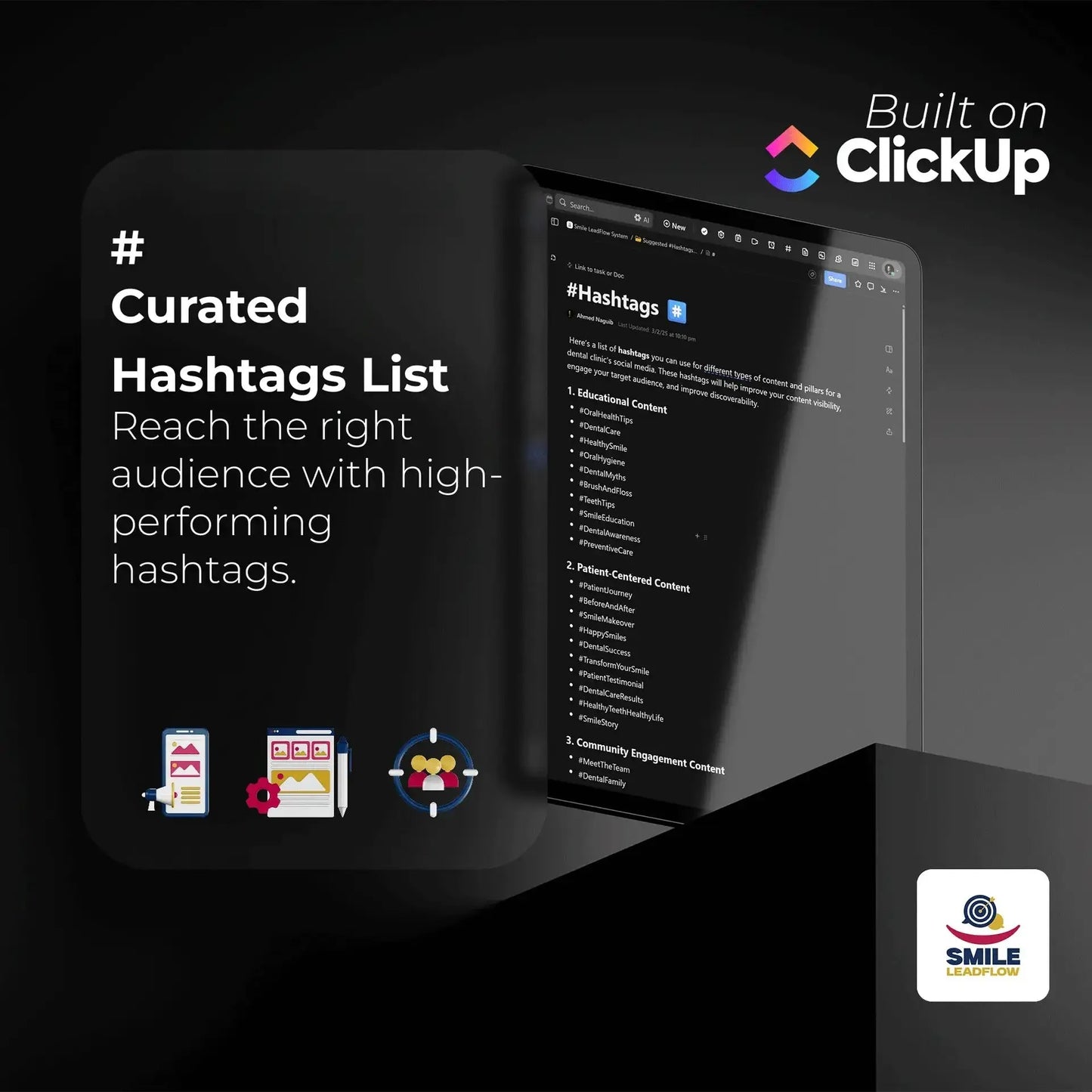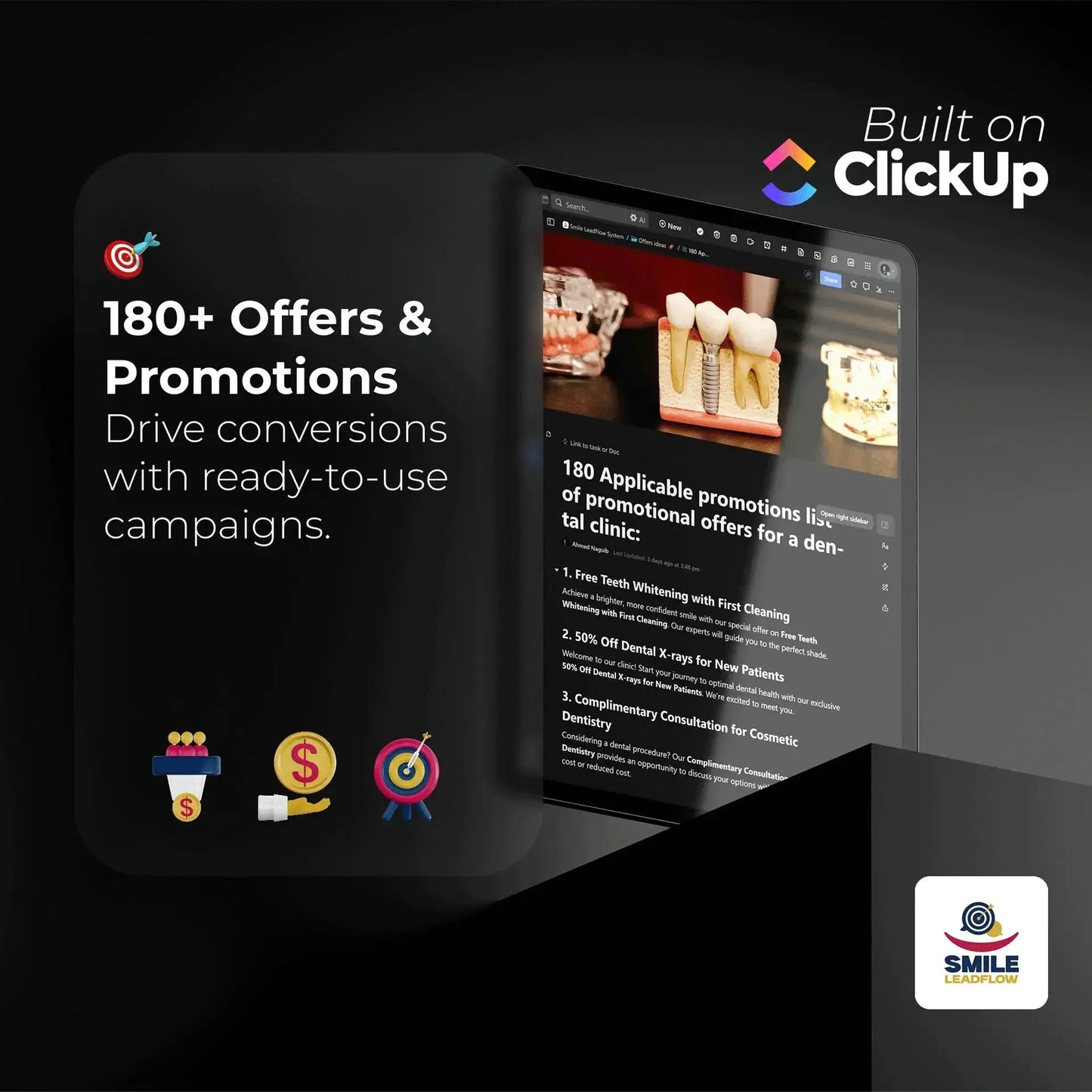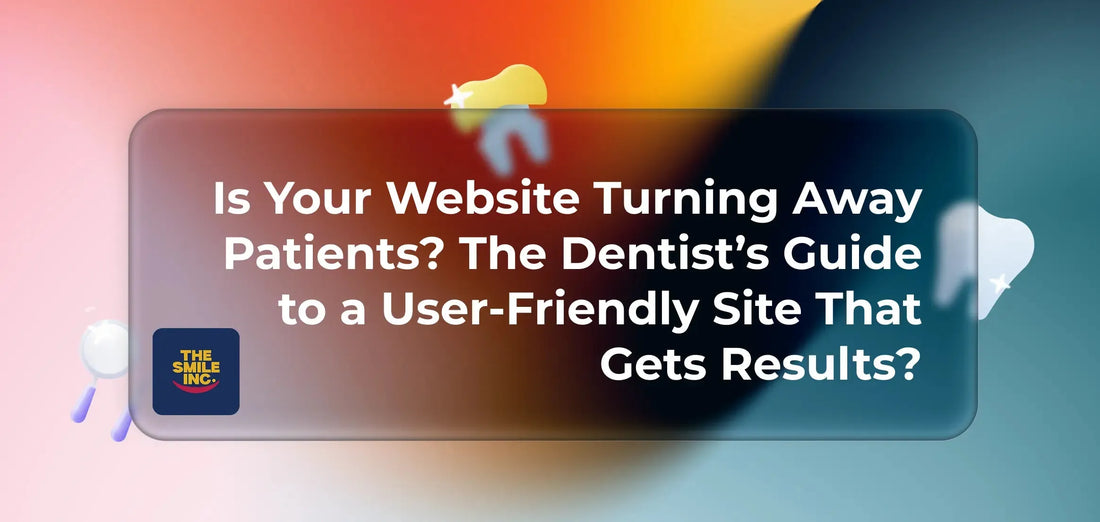
Is Your Website Turning Away Patients? The Dentist’s Guide to a User-Friendly Site That Gets Results?
Ahmed NaguibShare
Being a dentist is demanding. You spend your days focused on providing exceptional patient care, from routine cleanings to complex procedures. But on top of being a top-tier clinician, you're also a business owner. This means you're constantly thinking about how to market your dental practice and get more dental patients through the door. It's a juggling act, and frankly, marketing can feel like a whole other profession.
The good news? Your most powerful marketing tool is one you already have: your website.
In today's digital world, your clinic's website is your virtual front door. It’s often the very first impression a potential patient has of your practice. A poorly designed website can quickly drive them to your competitors' sites. But a professional, user-friendly website does the opposite—it builds trust, showcases your expertise, and converts visitors into loyal patients.
This guide will cover essential aspects of dental website SEO and user-friendly design. Think of this as beginner-friendly dental marketing, offering practical steps to successfully promote your dental clinic, even without a marketing degree.
What Defines a User-Friendly Dental Website?
Imagine a new patient walking into your clinic. The waiting room is clean, the receptionist greets them with a smile, and finding their way around is simple. A user-friendly website provides that same seamless and welcoming experience online.
It’s a site that makes it incredibly easy for visitors to find what they need, whether they’re on a desktop computer, a tablet, or their smartphone.
Key characteristics include:
- Clear Navigation: Information is organised logically and is easy to find.
- Responsive Design: Your site looks and works perfectly on any device.
- Fast Load Times: Pages load in a snap to keep visitors engaged.
- Accessible Design: The site is usable by everyone, including people with disabilities.
- High-Quality Content: The information is valuable, clear, and answers patient questions.
Now, let's dive into implementing these elements on your site.
Key Strategies for a High-Converting Dental Website

Here are the core strategies to transform your website into a patient-generation machine. These local dental marketing tips are foundational to your online success.
1. Make Your Navigation Crystal Clear 🗺️
A disorganised website is frustrating. If a potential patient can't quickly find your services or contact information, they will leave.
✅ Actionable Steps:
- Simplify Your Menu: Feature a clean, clearly labelled navigation bar. Stick to the essentials that patients look for first: ‘About Us', 'Services', ‘New Patients', ‘Book Appointment', and 'Contact'.
- Use Drop-Down Menus: Organise your services neatly under a single "Services" tab. For example, you can list "General Dentistry", "Cosmetic Dentistry", and "Orthodontics" in a drop-down menu to avoid clutter.
- Include a Search Bar: A search function is a great tool for visitors who want to find specific information quickly.
2. Embrace Responsive, Mobile-First Design 📱
More people search for dentists on their phones than on desktop computers. A website that isn’t optimised for mobile devices is a major liability. A responsive design automatically adjusts to fit any screen size, ensuring a perfect experience for every visitor.
✅ Actionable Steps:
- Prioritise Mobile: It is crucial that your website is mobile-friendly. Use Google's Mobile-Friendly Test to see how your site performs.
- Test, Test, Test: Regularly check your website on different devices (smartphones, tablets) to ensure it loads correctly and is easy to navigate on all screens.
3. Speed Up Your Website’s Load Time 🚀
In the realm of dentist SEO, website speed is crucial for success. Studies show that if a website takes longer than three seconds to load, over 50% of visitors are likely to leave. A slow site not only frustrates users but also negatively impacts your Google ranking.
✅ Actionable Steps:
- Optimise Images: Large, high-resolution images are a common cause of slow load times. Use free online tools like TinyPNG or ImageOptim to compress image files without sacrificing quality.
- Choose Reliable Hosting: Your web hosting provider matters. Reputable hosts like Bluehost, SiteGround, and WP Engine are known for their reliability and speed.
- Minimise Plugins: If you use WordPress, be mindful of how many plugins you install. Too many active plugins can bog down your site’s performance.
4. Ensure Your Website is Accessible to All
An accessible website is designed to be usable by everyone, including individuals with vision or mobility impairments. This is not only the right thing to do but also a legal requirement in many places. Plus, it expands your potential patient base.
✅ Actionable Steps:
- Use Alt Text for Images: Add descriptive alternative text (alt text) to every image. This helps visually impaired users understand your content and gives your dental website SEO a boost.
- Check Colour Contrast and Font Size: Text should be easy to read. Use high-contrast colour combinations (like dark text on a light background) and choose a font size that is large enough for comfortable reading.
- Enable Keyboard Navigation: Ensure all buttons, links, and forms can be navigated using only a keyboard.
5. Create High-Quality, Helpful Content ✍️
Your website's content should build trust and position you as a knowledgeable authority. Focus on providing clear, valuable information that addresses the needs and questions of your potential patients.
✅ Actionable Steps:
- Describe Your Services: Go beyond just listing services. Explain what each procedure involves, its benefits, and who it's for.
- Start a Blog: Create educational content that answers common dental health questions. Blog posts like "5 Tips for a Healthier Smile" or "What to Expect During a Root Canal" are excellent for dentist SEO.
- Build an FAQ Page: A dedicated Frequently Asked Questions (FAQ) page can save your staff time and provide immediate answers to common patient enquiries about insurance, appointments, and procedures.
How to Boost Engagement and Build Trust
A user-friendly site is the foundation. The next step is to add features that actively engage visitors and build confidence in your practice.
- Online Appointment Booking: Make scheduling an appointment effortless. Integrate a system like Zocdoc or Square Appointments directly into your site so patients can book 24/7. Don't forget to set up automated email or text reminders to reduce no-shows!
- Testimonials and Reviews: Leveraging positive testimonials and reviews from satisfied patients can significantly boost trust in your practice. Feature glowing patient testimonials on your homepage and include links to your profiles on Google Reviews, Yelp, or Healthgrades. This transparency builds unwavering trust.
- A Virtual Office Tour: A 360-degree virtual tour can help anxious patients feel more comfortable by familiarising them with your office environment before they even arrive.
Your Website Needs Ongoing Care, Too!
A great website is never truly "finished". To ensure it remains an effective tool for your dental clinic marketing, you need to manage it proactively.
- Regular Updates: Ensure your site remains fresh by consistently adding new blog posts, updating staff bios, and sharing announcements about new technology or special promotions.
- Use Analytics: Install Google Analytics (it's free!) to easily track key metrics like your site traffic, bounce rate, and most popular pages. This data provides invaluable insights into what’s working and where you can improve.
Conclusion: Your Website is the Gateway to Your Practice
Your dental website is not just a digital business card; it's a dynamic and powerful tool that tirelessly promotes your dental clinic. It’s your lead generator, your brand ambassador, and a crucial part of the modern patient experience.
By focusing on clear navigation, responsive design, fast load times, accessibility, and high-quality content, you can transform your site from a simple online presence into your most effective marketing asset.
Your Call to Action (CTA)
Ready to begin? Dedicate 15 minutes this week to assess your website using the checklist provided. Pick just one area to improve. A small, simple change today could be the reason a new patient chooses your clinic tomorrow.
References
- Google Analytics Help Centre. (2024). Understanding website analytics for healthcare practices. Google Support.
- Search Engine Journal. (2022). SEO for healthcare websites: Best practices and strategies. Search Engine Journal.
- W3C Web Accessibility Initiative (WAI). (2023). How to make your website more accessible. W3C.
- Zocdoc. (2024). Online booking for healthcare providers. Zocdoc.












